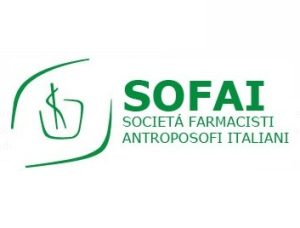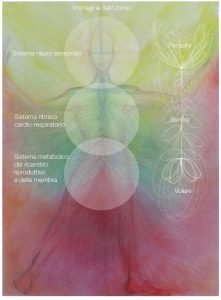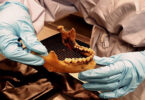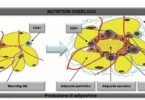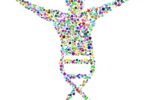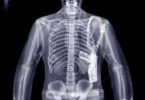By Societá Farmacisti Antroposofi Italiani
Experiences, globally, over the past two and a half years have highlighted critical issues and trends that Rudolf Steiner (1860-1925), the great Austrian philosopher, visionary and scientist, founder of Anthroposophy, predicted more than a century ago (2).
There is no sphere of human knowledge that he did not explore in depth to reveal, later, its respective spiritual aspects as well. His titanic work allows us, among other opportunities, to overcome the current scientism, the predominant religion today, which has imposed itself by intimidating and mortifying the intelligence, with almost no love for the truth; scientism that ideologically separates the natural from the supernatural, excluding the latter from scientific knowledge and preventing, thus, a true knowledge of the soul and spirit. Today it is technology that dominates and is confused with science, forgetting that, in the past, the latter was the child of philosophy, the result of intuitions of cosmic laws, reflected in Nature and in the human being. Through Anthroposophy, or Spiritual Science we have, now, the possibility of reunifying art, religion and science, with the tool most suited to our times: thought.
Thanks to the study and editorial care of the scientific works of J.W. Goethe (3, 4), R. Steiner understood the importance of pure thought, free from sensible representations that nourish reflected knowledge, unable to connect to the ideal world of archetypes. He wrote, thus, “The Philosophy of Freedom” where he founded his theory of knowledge that is the basis of all his scientific-spiritual research (5).
- Steiner wasa very practical man, not just an intellectual. This is also evidenced by his activities before and during World War I, which he worked to avert by giving lectures aimed at stimulating the awareness of the Central European peoples of their peculiar spiritual mission. He then illustrated, very lucidly, the factors that led to the conflict, including skillful propaganda, all topics still more than relevant today! In his two 1917 memoranda (6) to Emperor Charles of Austria, he laid bare the merely economic aims of the Anglo-Americans and outlined the social tasks potentially consequent to a healthy development of Central European life. It was, this last part, an outline of his revolutionary proposal for a “social triarticulation,” aimed at establishing a correct and harmonious placement of cultural, legal and economic aspects reflecting the ideals of freedom, equality and fraternity.
The keys to understanding provided by Anthroposophy satisfy the demand, increasingly pressing in our age of “specialization,” to find a thread that unites all knowledge, to put it at the service of everyday life and facilitate the understanding of all the experiences that make every human life unique and meaningful.
In the medical field, R. Steiner, together with Dr. Ita Wegman, proposed an expansion of the medical art that led to great successes in both the clinical and pharmacological fields (7).
For the understanding of anthroposophical Medicine and Pharmacology, it is necessary to mention some principles of the anthroposophical anthroposophical view, indicated by R. Steiner with specific terminology.
Basic is the so-called “fourfold division” (8), that is, the definition of certain invisible bodies that interpenetrate our physical, material body, which taken in isolation we can only identify with the corpse which, like all regnomineral, is destined for gradual disintegration.
That which makes our physical body alive, which provides for the primary physiological functions and the maintenance or restoration of health, is called by Spirit Science the etheric or vital body or the forming forces, whose sphere of action is the entire fluid organism that interpenetrates us (without water there is no life!), which we have in common with the plant kingdom that is its main representative.
Hierarchically speaking, the so-called astral body, which we have in common with the animal kingdom, dominates the etheric body and differs from the latter in its catabolic metabolism, the prerequisite for the development of consciousness. It is the realm of instincts, passions, cravings, but also of feelings and sensations; it is the soul, the psyche, and its domain is the air element. Note how ànemos (= wind, in Greek), animal and soul have the same etymological root, as do motion and emotion (motion, emotion in English) that characterize them. In most cases, it is precisely from the astral body that disease originates, thus, we can consider almost all psychosomatic pathologies!
The human being alone, finally, can say Ego to himself, and the Ego can, in the course of life, educate the soul, so that the path it takes from life to life is fruitful for its own evolution, the Ego being our immortal part, our Spirit. Its organization stands above all these bodies and dominates them directly and indirectly, using, as the vector of its activities, heat.
Regarding the understanding of Anthroposophical Pharmacology, it is important to study elements and substances qualitatively, rather than quantitatively, since quality can exist, indeed is almost always more important, even in the absence of ponderal elements, as demonstrated by the effectiveness, for example, of Homeopathic Medicine. Moreover, points out R. Steiner (9) the dosage of an element or substance, indicates its presence, but not its specific local action, to achieve which he gives more specific suggestions.
This study is based on phenomenological observation, according to the method inaugurated by Goethe scientist, which unfortunately not everyone is familiar with, of the elements, substances, plants and animals that constitute the Anthroposophical Pharmacopoeia (10).
One of the main criteria in the choice of medicine is based on the relationship of the human being to the kingdoms of Nature and their common evolution, as extensively described by R. Steiner (11). If we consider diseases as processes that are not abnormal, but rather natural, but simply displaced in space or displaced in time, careful observation leads, in fact, to recognizing and linking them to processes taking place in Nature (1
2, 13).
In the case of plant remedies, R. Steiner expands the current pharmacognostic view by pointing out specific correspondences between plant and human, where we can distinguish two polar realms between them.
One is the region of the head, or neurosensory system, corresponding to the root of the plant, which shares with it perceptual activity (the root perceives the force of gravity and its surroundings), cold (in the head the
temperature is slightly lower than in the rest of the body and, when it rises, we can no longer think and the sensorium dulls), stillness (if there is agitation, for example in a concussion, the symptomatology is similar to that of fever) and hardening (the head is the hardest part of our body, inside of which we find the hardest substance we possess, tooth enamel).
At the other pole we find the system of turnover and limbs, which includes all the organs of the abdominal cavity deputed to metabolism and reproduction. There reign warmth, softness, transformation of substances and movement, characteristics that we find in the plant in the sphere of the flower.
These two poles are connected respectively by the thorax, which houses the heart and lungs, the rhythmic system, and the leaves. Characteristic of both spheres is rhythmicity, which is evident in t
he human being, and visible in the plant in the successive appearance and planar arrangement of leaves, as well as in the activity of leaf adaptation to light, daytime and nighttime processing (photosynthesis), and the rise and fall of sap. Many similarities also present the leaf and the lung.
Visualizing all this, there appears the image of man as an upside-down plant, as the ancient Greeks well knew.
Of course, this description, called functional tripartition, is only schemat
ic; in reality the three systems have a precise preponderant location, but they extend and interpenetrate the whole organism. For example, we find rhythmicity in peristalsis, as in hormone secretion, and we know well that neurosensoriality extends throughout the body, as does metabolism.
Completing the picture is the respective attribution to these three domains of the three activities of the soul: thinking, feeling and willing (14) (Illustration by Patrizia Giovanna Curcetti).
In the functional tripartition, the “Tria Principia” of the alchemists, Sal, Mercur and Sulphur, re-emerge in a modern key. In the large and the small we find again the principle of three.
Thanks to R. Steiner, moreover, the “signature theory” can rest on a solid scientific-spiritual foundation. He, in fact, demonstrated that plants having a pronounced tendency to hypertrophy of on e of the poles have therapeutic virtues toward the corresponding diseased human pole, as well as those having a dislocation of qualities belonging to a particular pole.
A classic example is that of Bryonia: a Cucurbitaceae in which the processes of flower and fruit are basically dislocated in the root, which is voluminous, rich in fluids and sulfur substances that are normally formed in the sphere of the flower. Bryonia signatures correspond on the one hand to the pathological picture of water retention in the liver, for example, in cases of hepatitis; on the other hand, to a pathological situation in which the physiological function of the liver, t
hat is, to collect fluids from the portal vein, is pathologically displaced in another organ. This is why it is employed when a symptomatic picture described as “a liver process in the wrong place” i.e., abnormal fluid collection in the connective tissue of a particular organ occurs. (15)
From these very brief outlines, it can be guessed how Anthroposophical Medicine aims to harmonize the sensitive and supersensible parts that make up each human being; let us add that the treatments used consider and respect, as far as possible, their individual destiny needs.
- Steiner often mentions the Ecumenical Council of Constantinople in 869, where the concept of spirit was abolished and some of its characteristics were attributed to the soul. This most important fact conditioned from that time onward the view of the human being, concealing its immortal aspect, its true self, and is at the basis of the materialistic conception, dominant in our times, which R. Steiner pointed to as the true spiritual cause of the First World War and subsequent wars.
At present, in fact, we find ourselves, more or less consciously, in the midst of a spiritual war with regard to the human ego and soul and its evolution, an evolution which, as R. Steiner indicates when he illustrates the history of our planet and humanity, concerns, in truth, our states of consciousness (11).
In this age, we are required to develop our “conscious soul” and this is evidenced, for example, by the fact that many of us are asking more and more questions, instead of following paths already taken as was the case in past eras. In previous decades, what we are currently experiencing has been carefully prepared to prevent such a development: think, for example, of the radical changes in school curricula, the gradual degradation and depravity of the media, television foremost among them, which continue to implement real propaganda designed to prevent any personal critical judgment and to arouse fear and hatred and other lowly feelings, with the consequences we all have before our eyes. Such a weakened ego is no longer able to educate the “sentient soul” so low feelings prevail, at the expense of courage, goodwill and a spirit of brotherhood that will characterize our future evolution.
The fear of death is the child of the prevailing materialism that has made us forget the spiritual dimension of existence and, therefore, the true understanding of the meaning of life, unfortunately even at the ecclesiastical level!
What about, then, transhumanism? Instead of an ego that makes use of free and creative thought, combined with a feeling that it has educated, in order to perform free moral actions, it wants a man into whom thoughts and feelings are injected that will lead him to perform actions that are also programmed, controlled by artificial intelligences down to his deepest intimacy, driven more and more to live in a virtual world, until he reaches the Metaverse. Will such a man still be able to call himself a Human Being? Intelligence, imagination, courage, spirit of sacrifice and all other qualities that characterize him will be lost. This is a very dangerous attack on the conscious ego and soul, so well prepared and concealed as to be invisible or, worse, welcome, in the eyes of most: the normalization of horror!
Anthroposophical Medicine considers all this and helps the human being to balance his material and spiritual aspects, taking into account the individual biography, placed in the universal evolutionary context that provides for a gradual conscious and personal regaining of the spiritual realm, that is why it is the medicine of the future!
BIBLIOGRAPHY
- Anthroposophical maxims O.O.26 Anthroposophical Ed. MI
- The Fall of the Spirits of Darkness, O.O. 177Ed. Anthroposophical MI
- R. Steiner: Introduction to Goethe’s Scientific Writings O.O.1 Ed. Anthroposophical MI
- R. Steiner: Philosophical Essays: Fundamental Lines of a Gnoseology of the Goethean Worldview, with special reference to Schiller and Truth and Science – Proem for a Philosophy of Freedom O.O.2 and 3 Ed. Anthroposophical MI
- R. Steiner: The Philosophy of Freedom O.O. 4 Ed. Anthroposophical MI
- R. Steiner: The 1917 Memoranda Ed Tilopa
- R. Steiner – I. Wegman: Fundamental elements for an extension of the medical art O.O. 27 Ed. Anthroposophical MI
- R. Steiner: Theosophy O.O. 9 Ed. Anthroposophical MI
- R.Steiner: Scientific-spiritual foundations of therapy O.O. 313 Ed. Anthroposophical MI
- ANTHROPOSOPHIC PHARMACEUTICAL CODEX APC EDITION 5.0 2022
- R.Steiner: Occult Science O.O. 13 Ed. Anthroposophical MI
- R.Steiner: Aspects of the Ancient Mysteries O.O. 232 Ed. Anthroposophical MI
- R.Steiner: Spiritual Science and Medicine O.O. 312 Ed. Anthroposophical MI
- R.Steiner: Enigmas of the Soul O.O. 21 Ed. Anthroposophical MI
- W. Pelikan: The medicinal plants. Nature and Culture ed.


